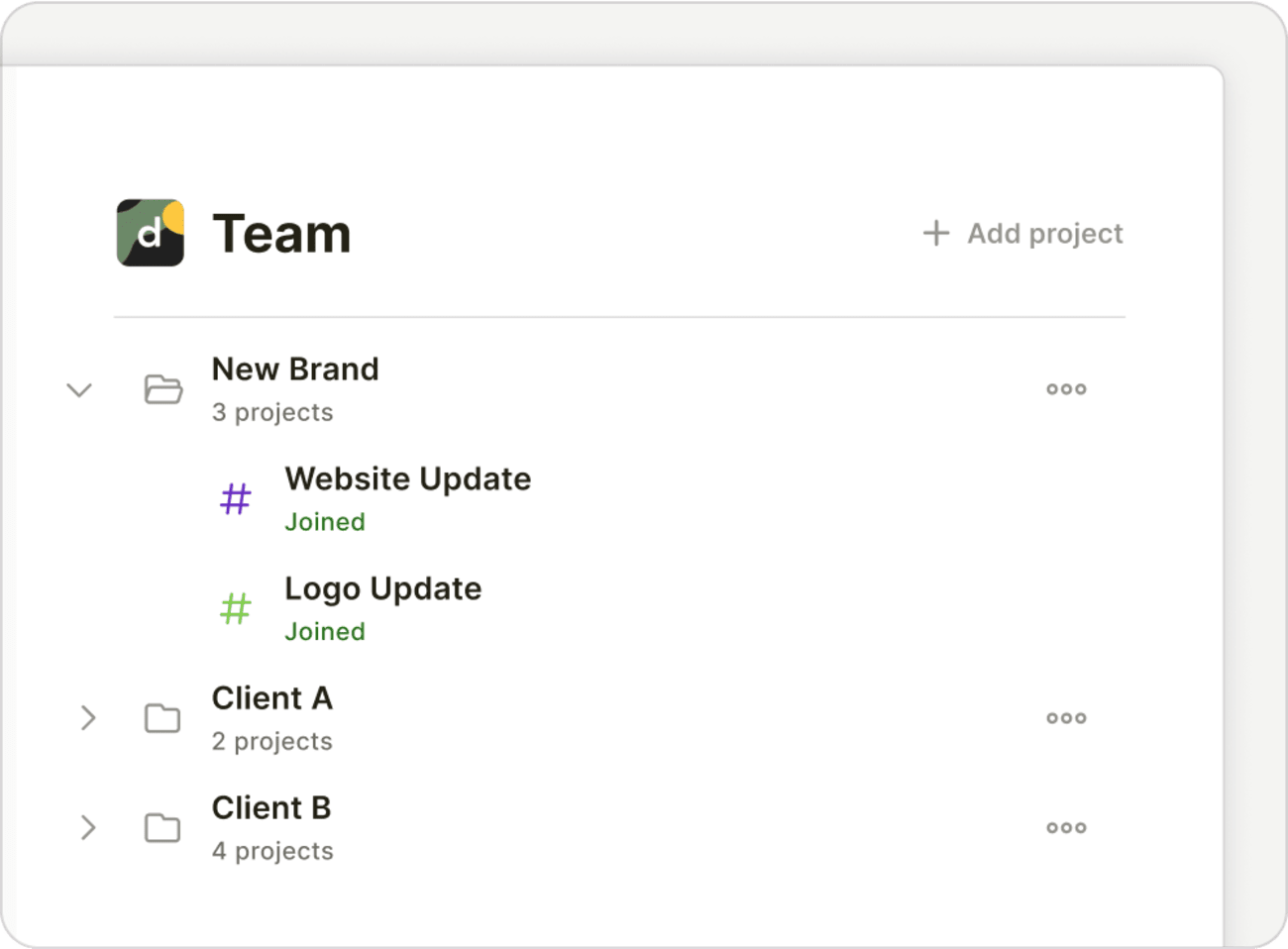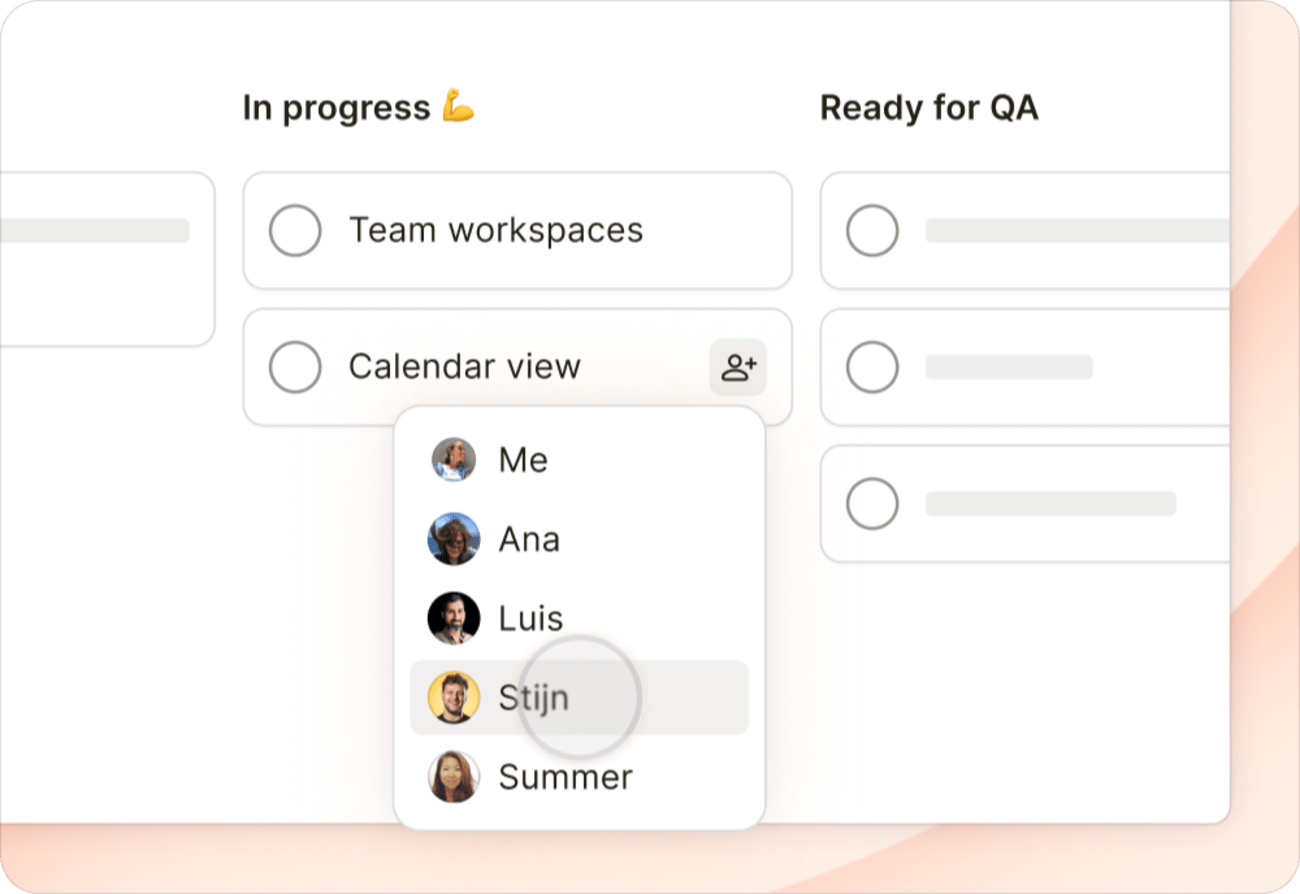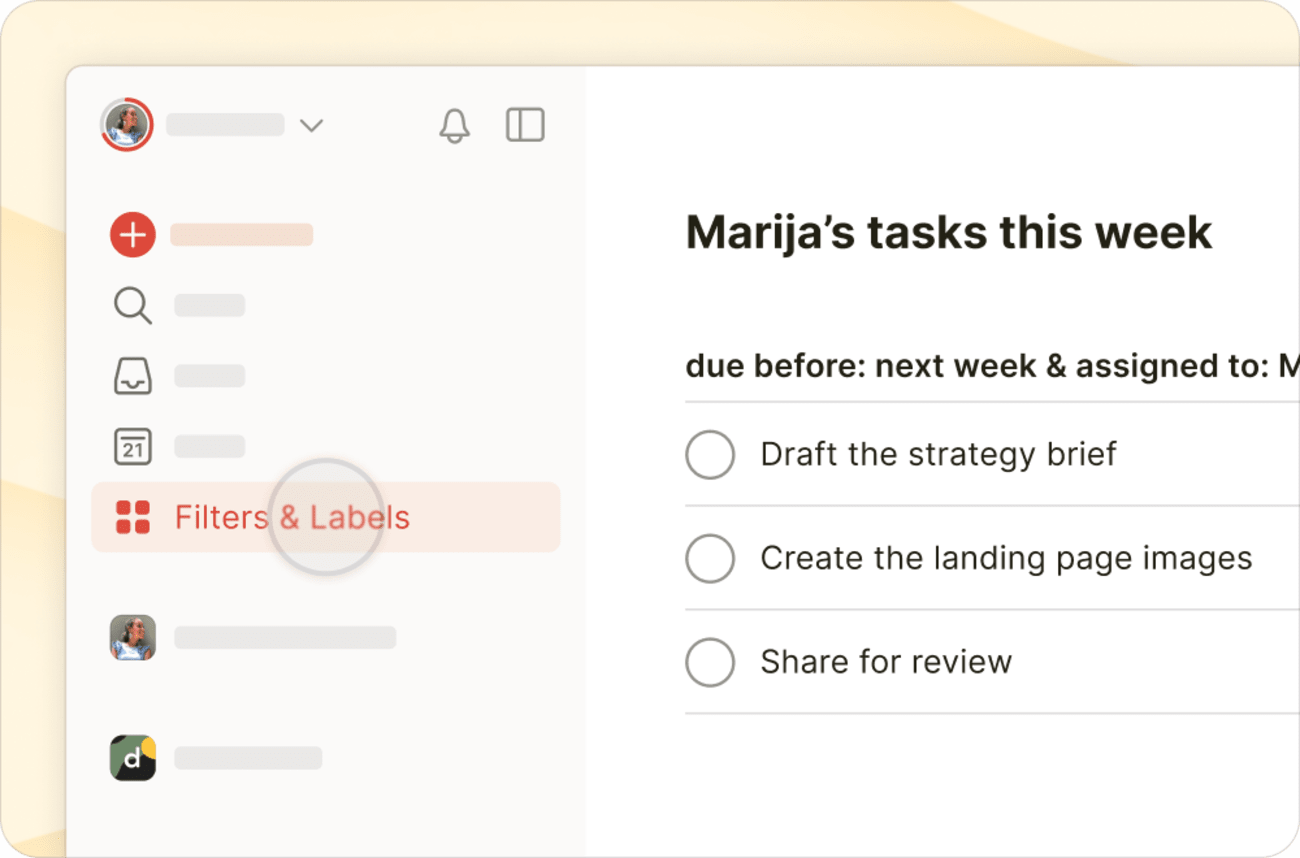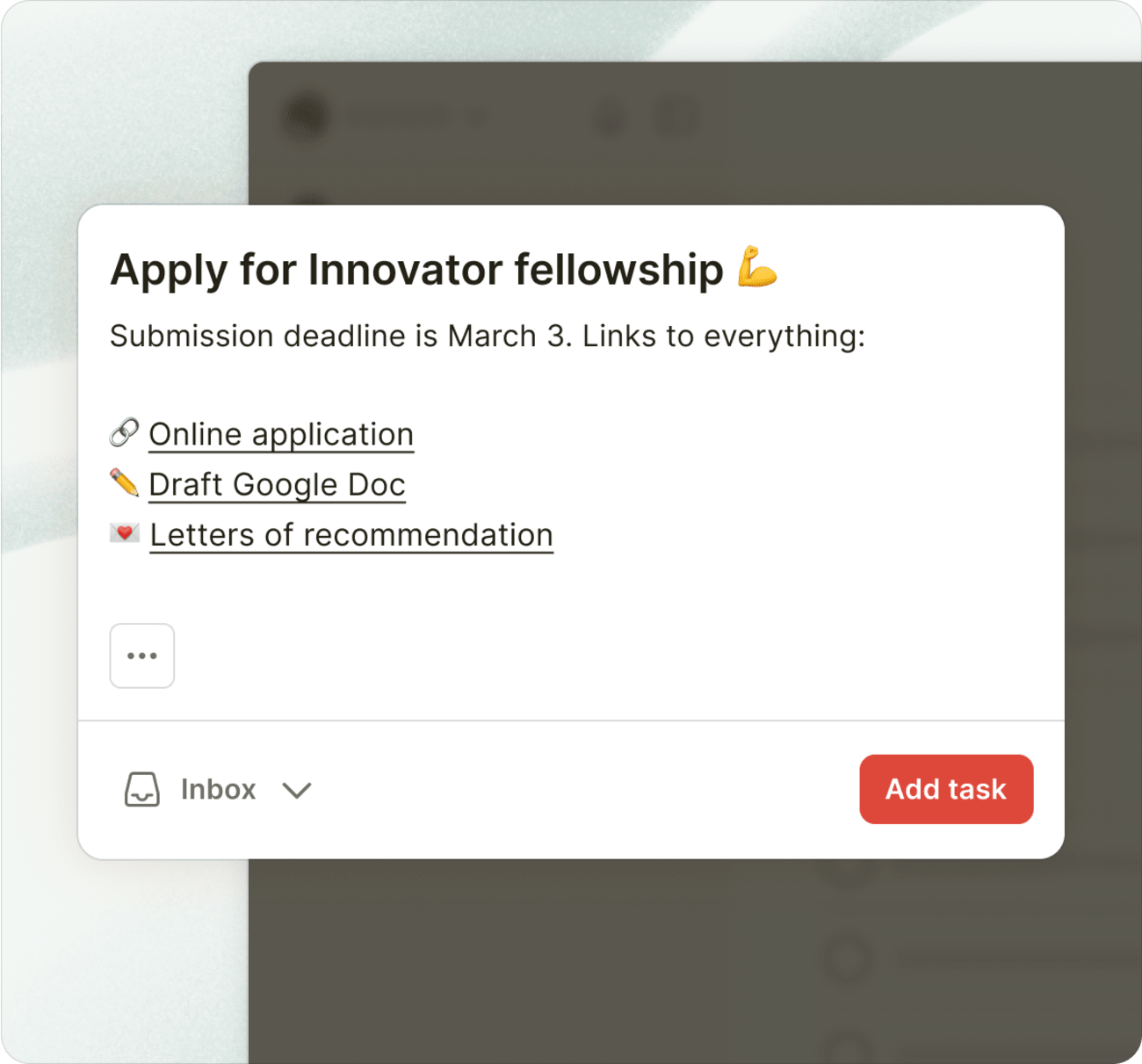You’ve just invited your team members to Todoist, and you’re ready to make progress on those long-standing project milestones. Learn and adopt these best practices to manage team tasks and collaboration in Todoist.
Kickstart teamwork with a few new projects

Choose one or two high-priority projects your team’s working on, and add these projects in your shared workspace. Start adding relevant tasks that come to mind, so your team members know what to work on soon as they open Todoist.
Quick tip
Don't know where to start? Take a look at our gallery of pre-populated templates for teams.
Assign tasks to team members

Assign every single task in a project to a team member, so they know what they’re responsible for. In Todoist, you can only assign one person to a task, so there’s no doubt about who’s responsible for doing what.
Want to assign multiple people to the same task? Here are a couple of options:
- If there are multiple steps to complete a task, break it down by adding sub-tasks. Then, assign each sub-task to a team member.
- If several people need to complete the same task, duplicate the task and assign each copy to the responsible member.
- Notify the relevant people in a task comment, so they’re fully aware of the status and progress of the work.
Sort or group tasks by Assignee

To get a clear picture of everyone’s workload, click Display at the top-right of the project and use either sorting or grouping options to see each person’s assignments.
Create team-specific filters

If you need to just see the tasks assigned to a specific person, create a filter and use this query:
assigned to:membername
If you need to see tasks assigned to all members except yourself, use this filter:
assigned to:others or !assigned to:me
These filters help you see what’s been assigned, giving you a clear picture of what everyone’s working on. If you need more, here are a few workspace-based filters you might find handy:
| Filter query | What it shows | Helpful for… |
|---|---|---|
| Workspace: [Team name] & assigned to: me & next 7 days | All tasks assigned to you in your team due this week | Planning your collaborative work for the week |
| Workspace: [Team name] & assigned by: me | All tasks you’ve assigned to anyone else on your team | Keeping track of progress on the things you’ve delegated |
| Workspace: [Team name] & overdue | All overdue tasks in your team | Spotting blockers and adjusting plans early |
Marija · Customer Experience Specialist
If you’re on the Todoist Business plan, you’ve access to the calendar layout in Todoist. Apply the calendar layout to any of your team-specific filters, so you can get a bird’s eye view of your teammates’ deadlines. Switch between the Week to Month views, so you can see what’s due this week or what needs wrapping up before the month ends.
Schedule tasks with dates or deadlines
Schedule dates or deadlines to tasks, so it’s easy to plan and prioritize work for the team. In the task name, write a date in natural language (for example: Write team update tomorrow) and the smart Quick Add will recognize, highlight, and add the date when you save the task. Natural language dates can also be as complex as every 3rd Thursday starting Aug 5 and ending April 10.
Quick tip
Check out more date examples you can use to schedule tasks.
If you’re tracking milestones, use deadlines to set when the task is due. This also reduces the risks of bottlenecks in a project.
For example, if you're adding a task to submit the monthly finance report, select the date you intend to start working on the draft. Then, set a deadline for when the report is due for submission.
Add context in task descriptions

Use task descriptions to share links to documents and as many relevant details as you can. Instead of wasting time hunting down information, your teammates will be able to just get started. Descriptions stay organized at the top of your task view and are visible underneath the task in the project list.
Ask questions, share files, or share updates in task comments

Ask questions, attach important files, and provide status updates right inside your tasks as comments. Actionable information stays in context with the task itself, instead of having that information spread out across external messaging apps.
Don’t forget to notify your teammates to make sure they’re informed about a new comment or a file they may need to get work done.
Check and measure your team’s progress
Todoist gives you all the tools you need to check and measure your team’s progress. Team Activity lets you zoom in on the number of active, completed, or overdue tasks, so you can take action on any stalled work. The Activity Log shows all activity in a project, from changed dates to new comments added to tasks. This wealth of information helps you make informed decisions about what to adjust, remove, or focus on, so the project reaches the finish line without missing a deadline.
Get in touch
No two teams use Todoist in exactly the same way. This guide is just a starting point! Set up your team in Todoist, and start experimenting with these workflows to make Todoist work for you.
If you’re having trouble using any of these features to manage team tasks, such as assigning tasks or creating custom filters, get in touch with us. We — Marija, Stef, Marco, or any of our other teammates — are more than happy to help!